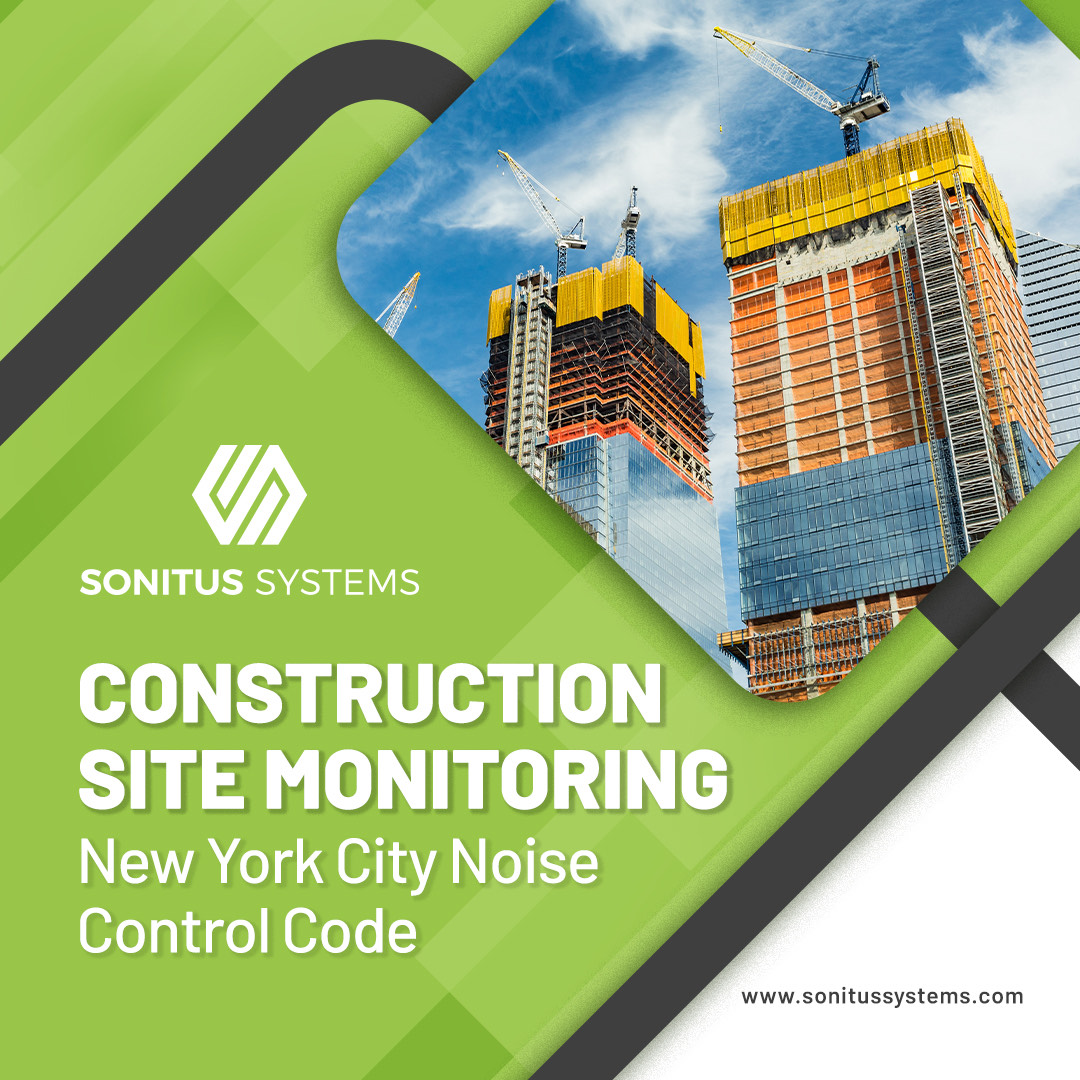Everyone is allowed to conduct construction on properties or sites between 7 am and 6 pm on weekdays. At all other times, including anytime on the weekends, it is mandatory to apply for after-hours authorization (see Local Law 113). Any person or business doing construction in the city must develop a Construction Noise Mitigation Plan before the start of construction or renovation.
NOISE MITIGATION PLAN
Sites where construction activities take place must clearly post a complete and accurate Construction Noise Mitigation Plan at the site at all times, In accordance with § 24-219 and § 24-220 of the New York City Noise Control Code. The plan must follow all the rules outlined in Title 15 of the Rules of the City of New York (RCNY) Chapter 28. Construction Businesses do not need to file the plan with the Department of Environmental Protection (DEP); however, it must be readily accessible to DEP inspectors that examine the construction site.
Exceptions are sites that will have emergency work completed within three days or less and will not be required to file the plan. An afterhours variance, pursuant to § 24-223 of the Noise Control Code may be applied for if work is not possible during otherwise allowable hours. Such plan must be readily available for inspection at the construction site.
Failure to comply with these requirements might result in significant financial penalties.
HOW CAN CONTINUOUS ENVIRONMENTAL NOISE MONITORING HELP?
Measuring and monitor site noise in a systematic and smart way helps site manager making more informed decisions about the preventative or corrective actions necessary to improve noise pollution control on site. Having continuous noise monitoring installed around your site is a huge addition to your noise mitigation plan.
Outside of helping companies to understand the actual noise levels and noise pollution, and whether this falls within the agreed and specified levels, conducting noise monitoring also enables companies to protect their own reputation and prevent unfair complaints or litigation from hurting them. If a community files a complaint about noise, then it is important for a company or site to be able to point to the facts; facts which can be derived from noise monitoring. With automated monitoring, higher incoming readings can be investigated immediately, dealt with and avoid incoming complaints.
Urban construction projects have a major environmental impact on occupants of residential, commercial, and public buildings. Keeping control of noise emissions from construction activities is continuous environmental monitoring which will identify excessive noise levels. The monitors are usually installed around the perimeter of the site to make sure noise emissions are monitored, controlled, and brought down to a minimum.
These systems provide continuous and reliable data which is uploaded to the online cloud platform and project managers will be notified via email & SMS text alerts when noise levels exceed the set limits and sites will always have proof that the strict working hours are honoured. In addition, audio clips can help finding excessive noise sources. With an AI tool, construction related noise sources can quickly be identified.
WHAT IS LOCAL LAW 113?
Local Law 113 is the New York City Noise Code, which is active since 2005 in order to reduce construction noise during nights and weekends and set decibel (dB) level thresholds.
The goal of the Noise Code is to manage noise so that commercial, cultural, and manufacturing activities may continue at volumes that are less intrusive to residents. The Noise Code establishes policies and standards and sets forth rules for enforcing noise regulations in New York City as described in Local Law 113. Businesses in the construction industry, commercial, cultural, and manufacturing establishments producing plainly audible sound above the sound of the immediate vicinity should become familiar with the Noise Code.
Construction businesses that cannot comply with the noise mitigation rules described in Local Law 113, must file an Alternative Noise Mitigation Plan (ANMP) with the DEP. The ANMP should be filed before construction activities take place. The approved ANMP should be posted at the construction site.
The new noise mitigation requirements Intro.1653-B was passed into law on January 18, 2018, to handle the large increase in complaints over the last few years for after-hours construction noise, which gives inspectors the ability to take noise readings from the roadway and sidewalks, instead of from inside a complainant’s apartment. Inspectors can shut down loud equipment
WHAT ARE THE AFTERHOURS SOUND LEVEL STANDARDS?
- 7dB(A) above the ambient level – inside residential property dwelling units, effective January 2020. This noise level is active for sites more than 200 feet from an affected residential property.
- 75dB(A) when measured outside the property line or on public-right-of-way 50 feet or greater from the source when the source is within 200 feet of the affected residential property.
- 85dB(A) for street construction noise when measured outside the property line or on public-right-of-way 50 feet or greater from the source.
Sources:
Sonitus Systems offers both the hardware and software for a range of environmental parameters on a continual basis, with real-time information available through our Sonitus Cloud dashboard. For more details on our indoor and outdoor noise and air quality monitoring products and services, please contact the team at https://www.sonitussystems.com/contact-us
